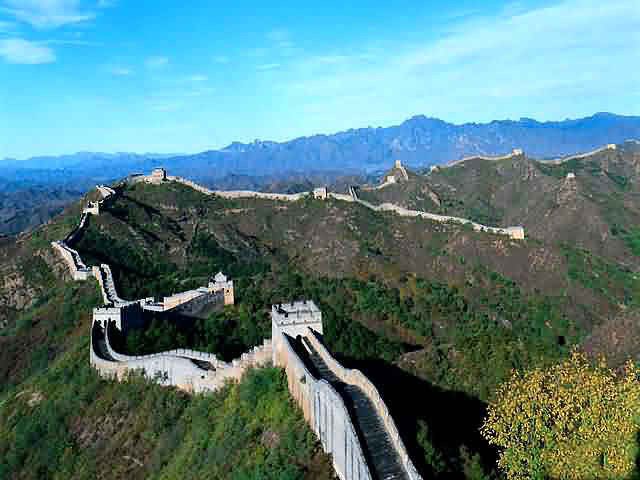Local Beijing Tours
Tour Tips
Sacred Road
Affiliated with the Ming Tombs, the Sacred Road was originally built to lead to
the Changling mausoleum. It was considered to be the road leading to heaven. Chinese
emperors were known as the Son of Heaven. During their reign they often passed through
the sacred road to the sacrificial altar in order to converse with heaven. After
their death, the funeral procession also took the path through the Sacred Road as
a symbol of the passed emperor 's journey to heaven in the afterlife.
To enter the Sacred Road, one must first go through the huge Memorial Stone Arch
guarding its entrance. Built in 1540 during the Ming Dynasty, the arch is the largest
and earliest of its kind. It has six poles and five archways. Designs of kylins
(a legendary mascot), lions, dragons, and mythical beasts are gracefully embossed
on its surface. The Great Red Gate has three archways and serves as the main gate
for the whole imperial cemetery. A stele stands on each side of the gate with an
inscription reading "Officials must dismount from horses", which demonstrates the
supremacy of the imperial power and the sanctity of the Sacred Road.
Further along the path, visitors will find a stele pavilion. At the four corners
of the pavilion, there are four tall marble columns each towering about ten meters
(32.8 feet) into the air. Each column is engraved with dragons and has a mythical
beast sitting on the top. As the story goes, the beasts facing south remind the
emperor to go out of the palace and among the people to observe their situation
and needs. The beasts facing north summon the emperor from an insignificant outing
to return to handle state affairs.
Alongside the Sacred Road are 18 pairs of marble figures lined up opposite each
other, almost as if watching those passing by. These creatures include twelve pairs
of animals such as lions, horses, elephants, camels, and other hulking beasts, and
six pairs of human beings such as generals, and public officials. The tradition
of setting up marble statues as guards of honor in front of the mausoleum began
in the Han Dynasty. It signified the royal dignity of the emperor while attempting
to bring good fortune and ward of evil influences.
The avenue of stone animals and statues ends at the Dragon and Phoenix Gate. But
the Sacred Road continues on until it reaches the chief tomb, now the resting place
of Emperor Yongle. This site offers a clear window into the beliefs and traditions
practiced in China hundreds of years ago. But watch your back, you never know who
or what might be watching you!
 |
 |
| This main road leading to the tomb complexes is bordered by vivid stone sculptures. | An anicent official statue standing on the road |
Beijing Attractions
| Recommended China Tours with Beijing | ||||||
|
||||||
|
||||||
|
||||||
|
||||||
|
||||||
|
||||||
Guide for China tour, offers most value & amazing experience. In China, you can rely on us
Copyright © 2001 - 2025. All Rights Reserved to ChinaTourGuide.Com
Hotel Guangzhou | Guizhou Tours | Hong Kong Hotels | 香港酒店 | 广州酒店 | 广州会议酒店 | Indochina Tour
Guide for China tours, offers most value & amazing experience. Chinatourguide.com. Your reliable China tour agency.







 More
China Tours
More
China Tours